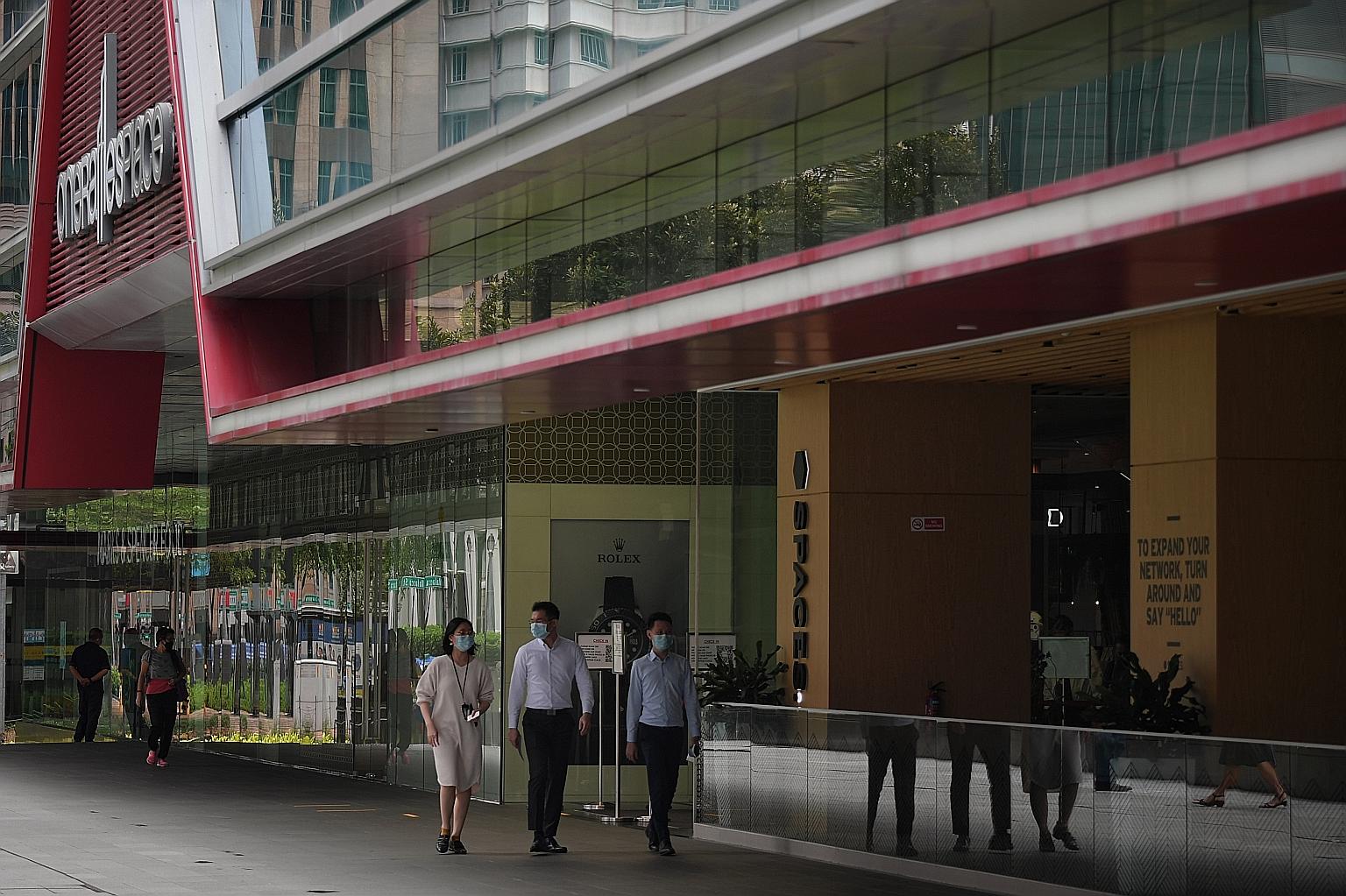Coronavirus: Work from home should be default option after circuit breaker, says MOM
Employees who have been doing so should carry on and return to workplace only if unavoidable
Sign up now: Get ST's newsletters delivered to your inbox

People during lunch time at Raffles Place in an almost empty Central Business District on Wednesday. Businesses which do not ensure that employees work from home where possible, or whose workers do not adhere to safe management measures, may have to close their workplaces.
ST PHOTO: KUA CHEE SIONG
Yuen Sin
Follow topic:
When the circuit breaker ends, all companies - including those resuming operations in the first two phases of the economy's reopening - should adopt working from home as a default option.
Employees who have been working from home must continue to do so and go to the office only when there is no alternative.
Checks will be conducted to ensure that this is being done, the Ministry of Manpower (MOM) said yesterday. Businesses which do not ensure that employees work from home where possible, or whose workers do not adhere to safe management measures, may have to close their workplaces.
Speaking to reporters yesterday, Manpower Minister Josephine Teo acknowledged that some employers may find employees returning to the office to be more productive.
"(But) Singaporeans have made a lot of sacrifices to bring down community transmissions to a very low level... You don't want to quickly give it up - all the gains that have been made - by being too quick in the reopening (of workplaces)," she said.
To reduce the risk of Covid-19 transmission, employees who must work in the office and those visiting workplaces should minimise socialising in the first two phases of the economy's reopening, said MOM.
All social gatherings at the workplace, such as birthday celebrations and team bonding activities, must be cancelled or deferred.
Employers must ensure employees do not socialise or gather in groups at the workplace, including during meals or breaks.
They should also not organise social gatherings outside the workplace, and employees should not socialise outside working hours, added MOM.
To streamline processes, the SafeEntry digital check-in system has been enhanced to allow workers to state that they do not have fever or flu-like symptoms when entering the workplace.
Some businesses had also given feedback that the temperature screening processes that were initially outlined by the authorities could be duplicative.
-
Updated guidelines for employers in phases one and two after circuit breaker
• Working from home should be the default option for all companies, including those resuming operations in phases one and two.
• Employees who have to work in the office and those visiting workplaces should minimise socialising.
• All social gatherings at the workplace, such as birthday celebrations and team-bonding activities, must be cancelled or deferred.
• Employers must ensure employees do not socialise or gather in groups at the workplace, including during meals or breaks.
• Employers should not organise social gatherings outside the workplace, and must also remind employees not to socialise both during and outside working hours.
• Employers can use the SafeEntry digital check-in system to allow workers to make health declarations when they enter their workplaces.
• Workers ferried in transport provided by employers must wear a mask at all times while seated in the vehicle, and should not talk or interact while they are in the vehicle.
• When using a lorry or van, the clear floor space of the deck available for each seated passenger should not be less than 0.496 sq m.
Yuen Sin
For instance, they could be tenants in an office building where screening is already conducted and it may not make sense for temperature screening to be conducted again before an employee enters the work unit.
In response to this, MOM said yesterday that regular checks for temperature and respiratory symptoms that need to be conducted twice daily can now be conducted by the employer or another party, such as the employer's landlord.
During inspections, employers can demonstrate that the checks are in place by providing records of temperature checks. They can also now demonstrate this by showing the facilities installed for temperature screening, such as a thermal scanner.
Mr Nick Lee, director of IT services firm AIT Technologies, said that most of his employees are currently working from home, and will continue to do so.
"It may be easier to communicate in person, but we understand that health and safety are more important," he said.
But Mr Zac Ng, managing director of recruiting agency Cultivar Consulting, said that it may be difficult for employers to ensure that their employees do not socialise outside of work.
"Within the office, we can ensure safe distancing. But if they want to go out for a drink after work and so on, it may be something that is out of our control," he said.

